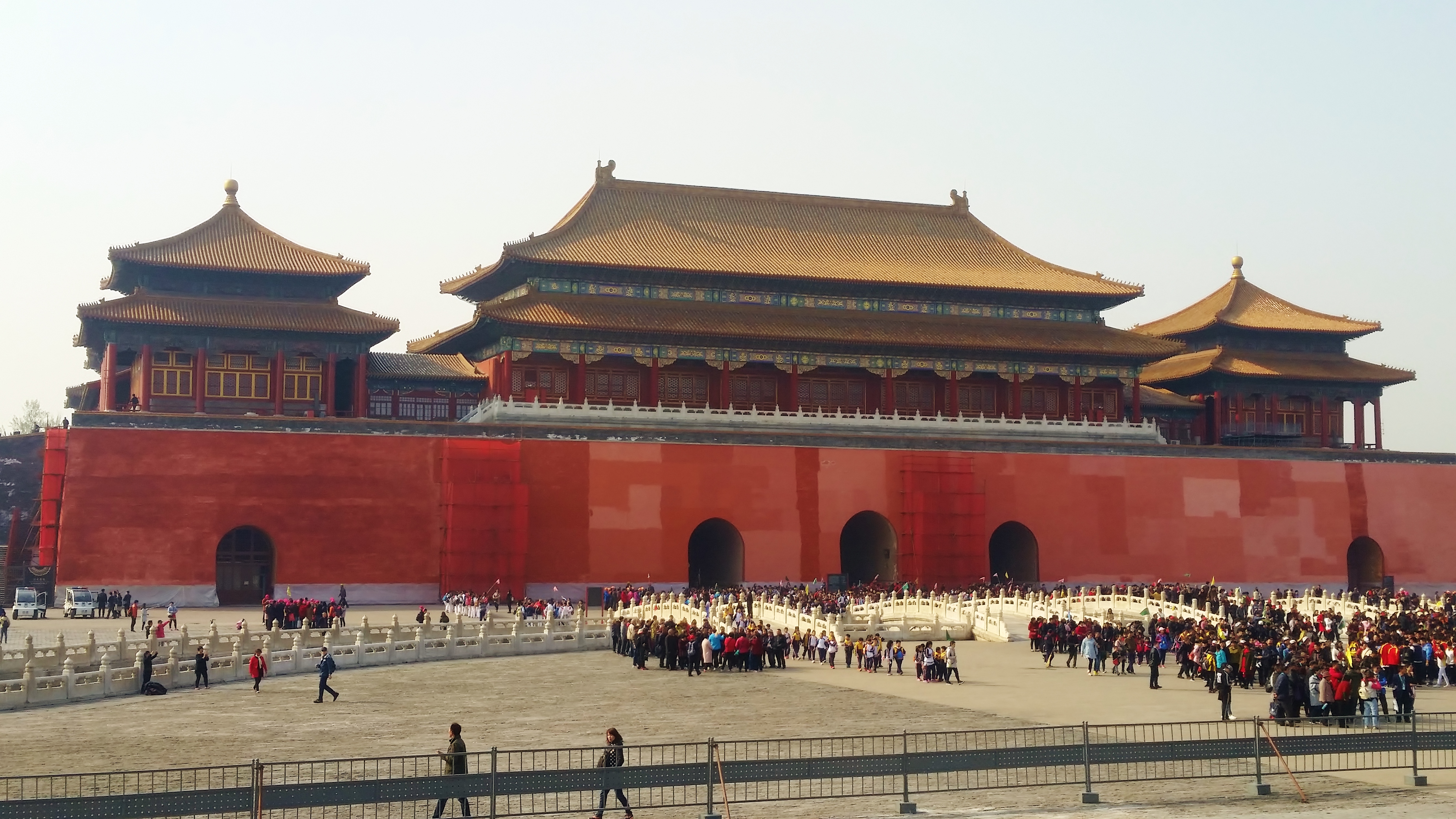Meridian Gate (Forbidden City) West wing interior 2015 December.jpg on:
[Wikipedia]
[Google]
[Amazon]
 The Meridian Gate or Wumen (; Manchu: ; Möllendorff: ''julergi dulimbai duka'') is the southern and largest gate of the
The Meridian Gate or Wumen (; Manchu: ; Möllendorff: ''julergi dulimbai duka'') is the southern and largest gate of the
 The Meridian Gate or Wumen (; Manchu: ; Möllendorff: ''julergi dulimbai duka'') is the southern and largest gate of the
The Meridian Gate or Wumen (; Manchu: ; Möllendorff: ''julergi dulimbai duka'') is the southern and largest gate of the Forbidden City
The Forbidden City () is a palace complex in Dongcheng District, Beijing, China, at the center of the Imperial City of Beijing. It is surrounded by numerous opulent imperial gardens and temples including the Zhongshan Park, the sacrifi ...
in Beijing
}
Beijing ( ; ; ), alternatively romanized as Peking ( ), is the capital of the People's Republic of China. It is the center of power and development of the country. Beijing is the world's most populous national capital city, with over 21 ...
, China. Unlike the other gates of the Forbidden City, the Meridian Gate has two protruding arms on either side, derived from ancient que towers traditionally used to decorate the main entrances of palaces, temples and tombs. The gate has five arches. The three central arches are close together in the main, central section; the two flanking arches are farther apart from the three central arches, and are located between the central section and the protruding arms. The centre arch was formerly reserved for the Emperor
An emperor (from la, imperator, via fro, empereor) is a monarch, and usually the sovereignty, sovereign ruler of an empire or another type of imperial realm. Empress, the female equivalent, may indicate an emperor's wife (empress consort), ...
alone; the exceptions were the Empress, who could enter it once on the day of her wedding, and the top three scholars of the triennial civil service examinations, who left the exams through the central arch. All other officials and servants had to use the four side arches.
A series of buildings form the superstructure of the gate. The central one is a pavilion of nine bays wide, with double eaves. On each of the protruding side, a 13 bays-long building with a single eave, connects the two pyramidal-roofed pavilions that represented the que towers.
Its superstructure is also called the "Five Phoenix Turrets" because it is composed of five buildings. Imperial proclamations and almanacs were issued from the gate house. After successful campaigns, the Emperor received prisoners of war here, sometimes followed by mass decapitations.
Although urban myth
An urban legend (sometimes contemporary legend, modern legend, urban myth, or urban tale) is a genre of folklore comprising stories or fallacious claims circulated as true, especially as having happened to a "friend of a friend" or a family m ...
has it that senior officers were executed here in Imperial China; in reality only corporal punishment was actually carried out.
Behind the viewer is Upright Gate, the principal entrance to the imperial palace grounds.
When proceeding northward through the palace grounds, the next major gate encountered is the Gate of Supreme Harmony
The Gate of Supreme Harmony (; Manchu: ; Möllendorff: ''amba hūwaliyambure duka'') is the second major gate in the south of the Forbidden City in Beijing, China.
The gate was originally built during the Ming dynasty, when it was called Feng ...
.
See also
*Ming Palace
The Ming Palace (), also known as the "Forbidden City of Nanjing", was the 14th-century imperial palace of the early Ming dynasty, when Nanjing was the capital of China.
History 14th century
Zhu Yuanzhang, who became the founder and first Emper ...
, in Nanjing, which had a southern gate also called "Meridian Gate".
* Meridian Gate (Huế)
The Meridian Gate ( vi, Ngọ Môn, Chữ Hán: 午門), also known as the ''South Gate'', is the main gate to the Imperial City, Huế, located within the citadel of Huế.
History
Constructed in 1833 in the traditional Vietnamese Nguyen sty ...
References
{{Palace Museum, state=expanded Gates of Beijing Forbidden City Ming dynasty architecture Qing dynasty architecture